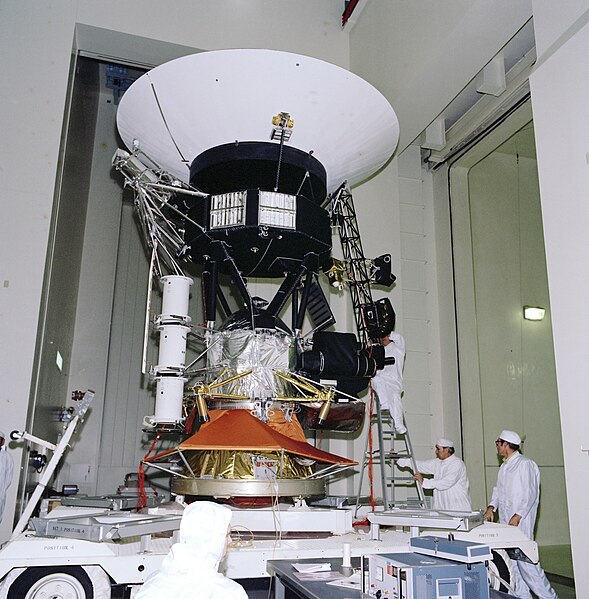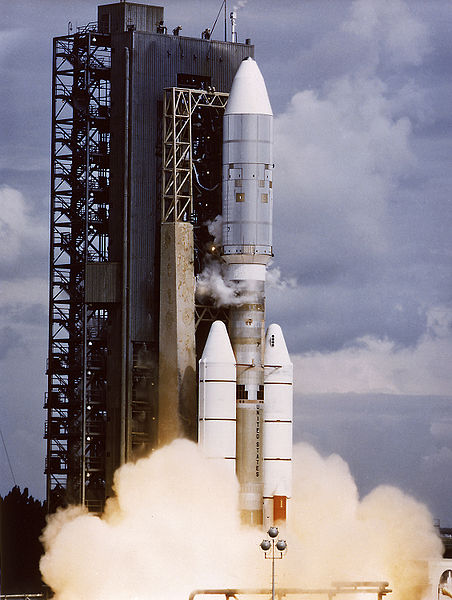The exploration of Uranus has, to date, been through telescopes and a lone probe by NASA's Voyager 2 spacecraft, which made its closest approach to Uranus on January 24, 1986. Voyager 2 discovered 10 moons, studied the planet's cold atmosphere, and examined its ring system, discovering two new rings. It also imaged Uranus' five large moons, revealing that their surfaces are covered with impact craters and canyons.
A colour photograph of Uranus, taken by Voyager 2 in 1986 as it headed towards the planet Neptune
The Uranian moon Miranda, imaged by Voyager 2
A Voyager 2 image of the Uranian dark rings
Voyager 2 is a space probe launched by NASA on August 20, 1977, as a part of the Voyager program. It was launched on a trajectory toward the gas giants Jupiter and Saturn and enabled further encounters with the ice giants Uranus and Neptune. It remains the only spacecraft to have visited either of the ice giant planets, and was the third of five spacecraft to achieve Solar escape velocity, which will allow it to leave the Solar System. It has been sending scientific data to Earth for 46 years, 8 months, 23 days, making it the oldest active space probe. Launched 16 days before its twin Voyager 1, the primary mission of the spacecraft was to study the outer planets and its extended mission is to study interstellar space beyond the Sun's heliosphere.
Voyager in transport to a solar thermal test chamber.
Voyager 2 awaiting payload entry into a Titan IIIE/Centaur rocket.
Voyager 2 launch on August 20, 1977, with a Titan IIIE/Centaur
The Great Red Spot photographed during the Voyager 2 flyby of Jupiter







